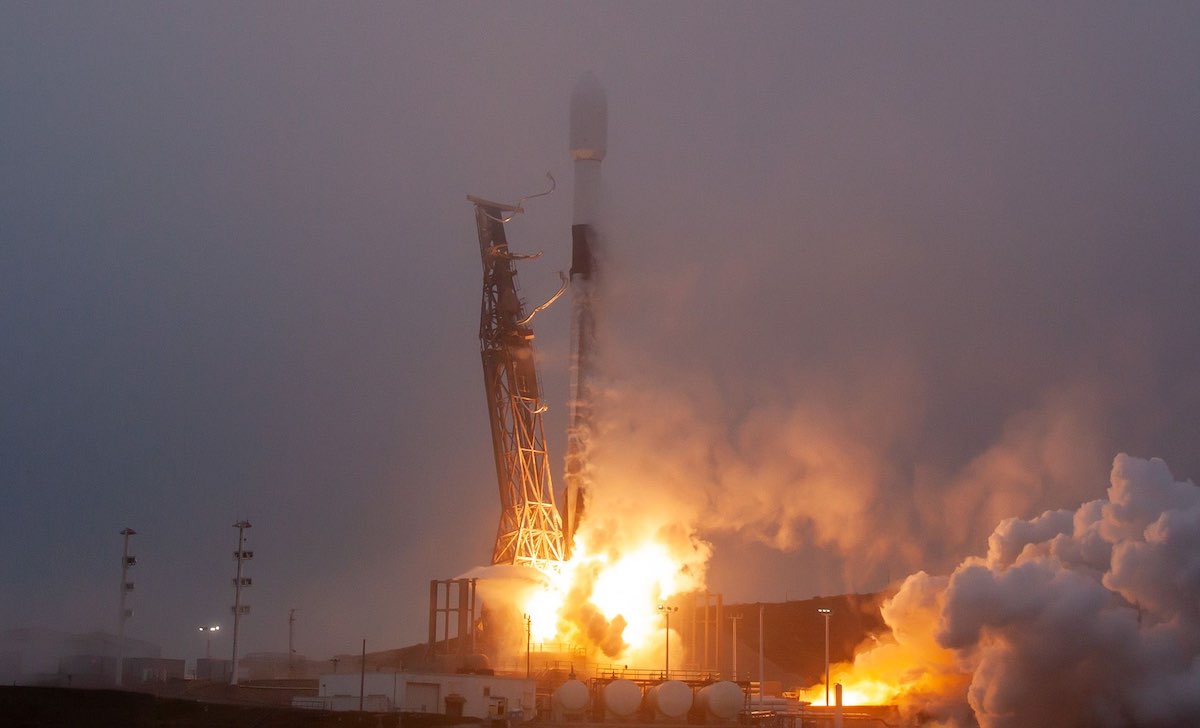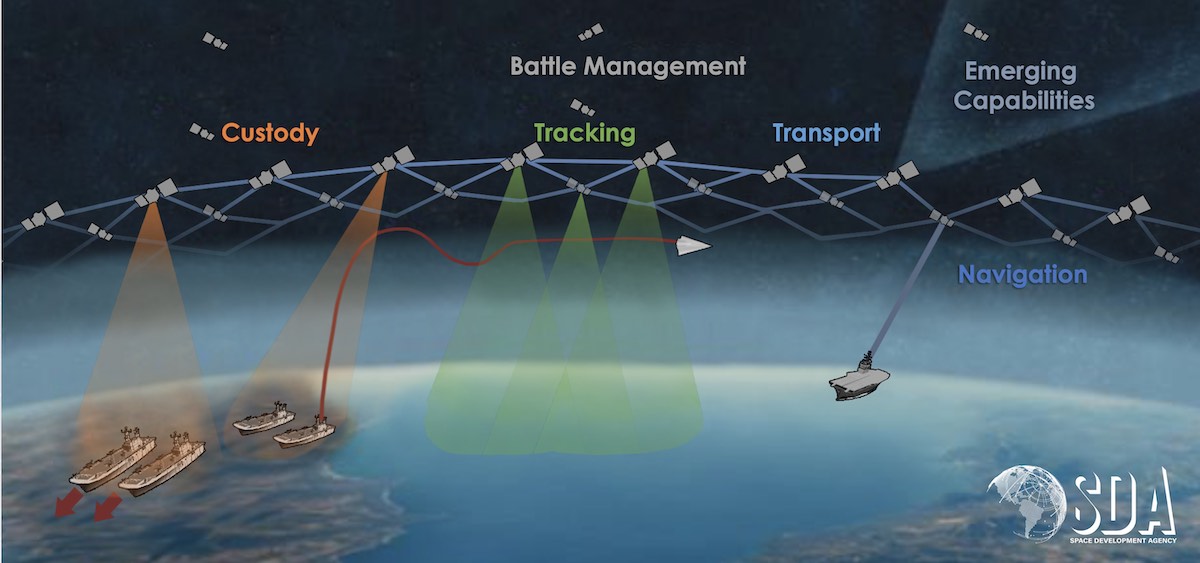The US Defense Department has begun deploying a new constellation of Proliferated Warfighter satellites designed to provide military communications and tracking of hypersonic missiles. The first batch of 10 spacecraft was launched into orbit by the Falcon 9 carrier, which launched on April 2. They will become the base of the new satellite architecture.
The Space Development Agency (SDA) is responsible for creating a network of military satellites. It is a new organization founded in 2019 by the US Department of Defense with the aim of introducing technological innovations in the field of national security as soon as possible. The first batch became part of the so-called Tranche 0. It consists of eight orbital repeaters built by York Space Systems and two missile tracking platforms created by SpaceX engineers. All spacecraft are placed in an orbit with a height of 1000 km, tilted 80° to the equator. The remaining 18 satellites of the “zero tranche”, among which there will also be spacecraft manufactured by Lockheed Martin and L3Harris, will go into space in June.

The launch was originally scheduled to take place on March 30 at 02:29 p.m. UTC (7:29 a.m. US Pacific Coast Time), but was canceled three seconds before the scheduled launch time. The second attempt was successful. The first stage of the carrier, after completing the mission, carried out an automatic landing near the launch site. At the request of the Pentagon, SpaceX did not publicly post a video of the launch.
Capabilities of the “orbital swarm”
The idea is that numerous satellites, each of which is smaller and cheaper than the current components of missile attack warning systems, will be less vulnerable to the anti-satellite tools of a likely enemy. On the other hand, they will expand the capabilities to detect and track potential threats, including attacks using hypersonic missiles. The resulting tracking data should then be sent directly to ground, air, or naval forces using existing tactical radio networks. This will allow to intercept and destroy an enemy missile in time.
SDA signed contracts for Tranche 0 series satellites in 2020. The transaction amount was USD 980 million, including the cost of two Falcon 9 rocket launches (they will cost USD 150 million). The first of them was supposed to take place in the same year, but its preparation was prevented by restrictions caused by the COVID-19 pandemic. The events related to Russia’s full-scale invasion of Ukraine forced the agency to seriously take up the implementation of the program.
Five of the eight satellites of the first series built by York Space Systems have two terminals for laser inter-satellite communication, as well as a payload for communication in the radio range. The other three spacecraft have the same equipment, but with an additional tactical channel for transmitting data to the armed forces on the Earth. Each tracking satellite created by SpaceX is equipped with an infrared sensor with a wide field of view manufactured by Leidos and two laser communication terminals.

Immediate prospects
Tranche 0 is considered an experimental launch — it serves to test the concept of data retransmission and network tracking of rockets, including tracking hypersonic missiles by their infrared “trace” that occurs when heated due to their friction with the air when flying at high speeds. Earlier systems could only register the thermal signature of a running jet engine, which significantly reduced the ability to detect objects actively maneuvering in the atmosphere. Experiments in this field are planned for the beginning of 2024, when the satellites will take part in large-scale military exercises in the Indo-Pacific region.
Further, in 2024 and 2025, it is planned to launch more than 150 additional satellites to ensure stable operational functioning of the Proliferated Warfighter system. By the end of the 2020s, hundreds more SDA spacecraft can be launched, and each new series will be equipped with the most advanced developments at that time in the field of countering new missile threats from China and Russia.
“In fact, we have developed an architecture based on two pillars,” SDA Director Derek Tournear said during a conference call with reporters. — Pillar No. 1 is an expansion, hundreds and hundreds of satellites. Pillar No. 2 — development in a spiral. This means that we are going to launch more and more advanced tranches almost every two years”. He added that the main idea of the Proliferated Warfighter system is to provide real-time tactical data superiority not only in the case of missiles, but also any other threats. Thus, land-based and sea-based interceptors will receive full situational awareness of the combat situation.
SDA did not publish information about the size and mass of the new satellites, as well as their photos at the production and testing stage. It is known that each data relay device created by York Space Systems and Lockheed Martin costs about USD 15 million, while tracking satellites from SpaceX and L3Harris have an average cost of about USD 40 million. It is known from open data that a total of 204 spacecraft have already been purchased for launches within the Tranche 0 and Tranche 1 series, and the total amount of contracts exceeds USD 3 billion.
Follow us on Twitter to get the most interesting space news in time
https://twitter.com/ust_magazine
